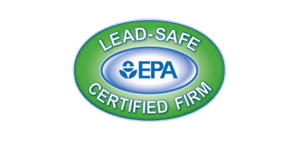When it comes to getting a good night’s sleep, your bedroom should be a safe and comfortable haven. However, if your home has suffered from water damage, you may be wondering if it’s safe to sleep in it. Water damage can compromise the structural integrity of your house and expose you to potential health risks.
It’s important to understand the dangers of water damage and take steps to mitigate them to ensure a safe living environment. In this article, we will discuss the health risks associated with sleeping in a water-damaged house, along with tips to assess and improve the safety of your home.
Key Takeaways
- Water damage can compromise the safety and structure of your home
- Sleeping in a water-damaged home can expose you to potential health risks
- Assessing the safety of your living environment is crucial for your personal health and well-being
- Proper ventilation, addressing mold growth, and improving indoor air quality can help mitigate risks
- If necessary, consider alternative accommodations while addressing water damage issues
Understanding the Dangers of Water Damage
Water damage in your home can come in many forms – from minor leaks to major floods. But no matter the cause, the risks associated with water damage cannot be ignored.
Structural issues may arise as water damage weakens walls, ceilings, and floors. This not only presents a danger to the occupants of the home but also a financial burden for the homeowner.
The worst danger of water damage is the growth of mold. Moisture from water damage creates the perfect environment for mold spores to grow. Some types of mold can release harmful toxins into the air, leading to serious health problems.
The consequences of water damage can be severe, which is why it’s crucial to act quickly and address the damage as soon as it’s discovered. This will minimize the risks and protect both your home and your health.
Health Risks Associated with Water-Damaged Environments
Water damage in your home can pose significant health risks to you and your family. Exposure to moisture, mold, and other contaminants in water-damaged environments can lead to various health issues.
| Health Risk | Explanation |
|---|---|
| Mold spores | Exposure to mold spores can cause respiratory problems, such as coughing and wheezing, and can trigger allergic reactions. |
| Bacteria | Water damage can promote bacterial growth, leading to infections, especially in individuals with weakened immune systems. |
| Allergens | Water damage can also increase the levels of indoor allergens, such as dust mites and pet dander, triggering allergy symptoms. |
The longer water damage goes untreated, the more severe the health risks can become. It’s essential to address water damage promptly to prevent these risks from escalating.
Water-damaged environments can have lasting health effects on you and your family. In the next section, we’ll discuss the common symptoms of water damage-related health problems to help you identify potential health concerns.
Common Symptoms of Water Damage-related Health Problems
If you suspect your home has suffered water damage, it’s important to be aware of the potential health risks. Early detection and treatment can prevent long-term health problems. Here are some common symptoms that may indicate health problems related to water damage:
| Symptom | Description |
|---|---|
| Coughing | Regular or frequent coughing can indicate respiratory issues resulting from mold exposure. |
| Wheezing | Wheezing is a high-pitched whistling sound when breathing and can be a sign of asthma caused by mold exposure. |
| Sinus congestion | Water damage can cause an increase in indoor allergens and irritants, leading to sinus congestion and other respiratory issues. |
| Skin irritation | Exposure to mold and bacteria can cause skin irritation, including rashes, itching, and redness. |
| Headaches | Headaches are a common symptom of mold exposure, particularly if they occur frequently in a water-damaged environment. |
| Fatigue | Chronic fatigue and exhaustion can result from prolonged exposure to indoor air pollution and dampness. |
If you experience any of these symptoms, it’s important to consult a medical professional and evaluate the safety of your home. A prompt response and proper remediation can mitigate future health risks.
Steps to Assess the Safety of a Water-Damaged Home
If you suspect water damage in your home, it’s crucial to assess the safety of your living environment. Here’s how you can evaluate the safety of a house with water damage:
1. Check for visible signs of water damage: Start by looking for any visible signs of water damage, such as water stains on ceilings or walls, peeling paint, or damp or musty odors.
2. Look for mold growth: Mold can grow in as little as 24-48 hours after water damage, so it’s essential to check for mold growth in your home. Common areas for mold growth include bathrooms, kitchens, and basements.
3. Check for structural issues: Water damage can weaken the structure of your home and cause significant problems if left unchecked. Look for signs of structural issues such as cracks in the walls, sagging ceilings, or floorboards that feel spongy or soft.
If you notice any of these issues, it’s essential to take action promptly to address the water damage. In some cases, it may also be necessary to consult professionals for a thorough assessment of the damage.
Remember, the safety of your home is vital for your health and well-being. Don’t hesitate to take the necessary steps to assess and address the damage promptly.
Mitigating Risks and Ensuring Safe Sleeping Conditions
When dealing with a water-damaged house, creating a safe sleep environment should be a top priority. Mitigating risks is crucial for your health and well-being. Here are some tips to ensure safe sleeping conditions:
- Maintain proper ventilation and airflow: Increased moisture levels from water damage can result in mold growth, which can cause respiratory problems. Keep the windows open, use fans, or invest in a dehumidifier to reduce humidity levels and ensure proper ventilation.
- Eliminate mold growth: Addressing mold growth is essential for mitigating health risks. Use a mold removal cleaner or hire a professional to get rid of the mold.
- Improve indoor air quality: Remove any water-damaged items, such as carpets and upholstered furniture, which can harbor mold. Use an air purifier with a HEPA filter to improve your indoor air quality.
| Device Type | Price | Features |
|---|---|---|
| Air Purifier | $100-$1500 | HEPA filter, activated carbon filter, UV-C light, quiet operation, air quality sensor, remote control |
| Dehumidifier | $50-$300 | Automatic shut-off, humidity control, removable water tank, quiet operation, energy-efficient |
Investing in devices like an air purifier or dehumidifier can help eliminate harmful particles in the air and maintain proper moisture levels, respectively.
Temporary Solutions and Alternative Accommodations
Addressing water damage issues can take time, and in the meantime, you might need to find alternative sleeping arrangements. Consider staying with friends or family until the repairs are complete. This will not only ensure your safety but also give the contractors space to work without worrying about your presence.
If staying elsewhere is not an option, you can try temporary solutions to minimize the risk of health hazards. For example, use a dehumidifier to reduce the humidity in the air and prevent mold growth. Additionally, seal off the affected areas to prevent the spread of mold spores.
Keep in mind that these solutions are not long-term measures and are only meant to be temporary. Prioritize your personal safety and well-being and ensure proper repairs are made as soon as possible.
Conclusion
In conclusion, sleeping in a water-damaged house can pose serious health risks. It’s vital to understand the dangers of water damage and the potential health hazards associated with it. If you suspect that your home has water damage, it’s crucial to take the necessary steps to address it promptly and create a safe sleep environment. Remember to assess the safety of your home by checking for visible signs of water damage, mold growth, and structural issues. If you notice any symptoms related to water damage, such as respiratory issues or skin irritation, consult a professional immediately.
When it comes to your health and safety, taking risks is not an option. Don’t compromise on your well-being by sleeping in an unsafe environment. Consider staying with friends or family while repairs are underway if necessary, and prioritize creating a safe space for rest and relaxation. Your health is worth the effort.
FAQ
Is it safe to sleep in a house with water damage?
Sleeping in a home with water damage can pose health risks. It is important to ensure a safe environment for sleep.
What are the dangers of water damage?
Water damage can lead to structural issues and mold growth. Addressing water damage promptly is crucial to minimize risks.
What health risks are associated with water-damaged environments?
Water-damaged environments can pose potential health hazards, including respiratory issues, bacterial growth, and allergen exposure.
What are common symptoms of water damage-related health problems?
Common symptoms of health problems related to water damage include respiratory symptoms, skin irritation, headaches, and fatigue.
How can I assess the safety of a water-damaged home?
To assess the safety of a water-damaged home, check for visible signs of water damage, mold growth, and structural issues. Consult professionals for a thorough assessment if needed.
How can I mitigate risks and ensure safe sleeping conditions in a water-damaged house?
To mitigate risks and ensure safe sleeping conditions in a water-damaged house, focus on proper ventilation, airflow, addressing mold growth, and improving indoor air quality.
What are some temporary solutions or alternative accommodations while addressing water damage?
Consider staying elsewhere, such as with friends or family, during repairs. Prioritize personal safety and well-being.



